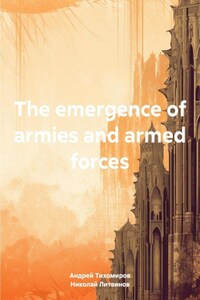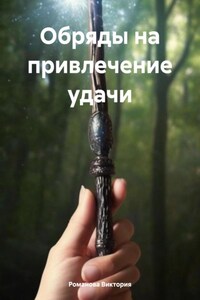The creation of armies in the history of different countries
The primitive communal system did not have an army, since there were no classes and no state in it. The generic organization of the society had only a self-acting armed organization of the population. The decomposition of tribal society into classes led to the emergence of the army as an instrument of class domination and oppression, and the self-acting armed organization of the population became impossible. In a slave-owning society, wars were primarily fought in pursuit of slaves and armies were slave-owning. Permanent armies were not formed immediately. The army of Ancient Egypt was based on military settlements and was located on the borders of the state, where allotment of land was payment for military service. Later, permanent armies appeared, the main purpose of which was to keep the population of the conquered regions in subjection and suppress uprisings. This, for example, was typical of the standing army created by Darius Hystaspes in the Persian Empire.
"A new page in the history of India begins with the era of chariot invasions by Indo-European semi-nomadic peoples from the steppes of the Urals and Altai. It was the beginning of a new historical period in ancient India, it is called the "Vedic" in connection with the ancient sacred Indian literature, the texts of the Vedas, the collection (Samhita) of hymns in the Vedic language (the predecessor of Sanskrit). Although these texts were composed between 1500 and 1000 BC, their complete collection was not clearly recorded until 900 or 800 BC. By that time, much of the meaning of these religious texts had already been lost due to many changes in social, economic, religious and political life. The reasons for the conquest of Northern India by the Aryans are as follows: the "tanks" of antiquity are widely used – cavalry and chariots, iron weapons, perhaps something like catapults spewing a fiery barrage of fire, since traces of severe high-temperature fires have been found in Mohenjo Daro and Harappa. The oldest city in Palestine, Megiddon, was destroyed several times due to terrible fires that engulfed the entire city, this was established by archaeological excavations and belonged to the V and VI layers. The word "armageddon" later came from the name of this city – the place where, according to Revelation John (16:16), when the end of the world comes, the last battle will take place with the participation of all the kings of the earth. Scientific research has proved that Armageddon is a distorted Hebrew phrase translated as "the mountain near the city of Megiddo" (in northern Palestine), where many decisive battles took place in ancient times due to the geographical location of this area, and the Roman garrison, known for its cruelty, was stationed there.
The fire trails were left by the ancient Aryans everywhere they visited. Including where their possible predecessors, arias, were located. A monstrous fire destroyed Troy II (many layers were found in Troy), traces of a monstrous fire were found everywhere in this layer. Not far from Babylon are the ruins of Borsippa. The first explorers considered them to be part of the urban area of Babylon. There, in Borsippa, the remains of the temple towered, which best tell about the way the Babylonians and Assyrians once erected their towers. In the turbulent years of the formation of archaeology, the idea arose that this tower from Borsippa could be identified with the world-famous Tower of Babel, which is mentioned in the Bible. Archaeologists have found huge religious premises of the temple and its extraordinarily powerful walls. Since ancient times, traces of a fire disaster have remained on them, which destroyed the temple to the ground. The temple tower was badly damaged during the fire. " (Tikhomirov A.E., Collection of articles in 2014, "PoLyART", Orenburg, 2015, p. 244).
The military system in the slave-owning countries served the ruling class of slaveholders. In the armies of the slave-owning states of Greece and Rome, slaves were recruited as soldiers, but from this the armies did not cease to be an instrument of suppression of slaves in the hands of the ruling class. The geographical position of the states of the ancient world – Egypt, Greece, Rome, the development of production, trade, navigation, the struggle for supremacy on the sea routes led to the emergence and development of the navy. Athens had the most powerful fleet, and then Rome. The navy, as well as the army, served to suppress the resistance of the exploited masses and acquire slaves. During the period of feudal relations, subsistence farming and feudal fragmentation precluded the possibility of maintaining large standing armies. Military power during this period was directly related to land ownership; the ruling class – the feudal knights, when marching, formed a militia – the feudal militia. Serfs in the army were used only as servants and served in the wagon train.
The development of commodity production and the growing social division of labor, the growth of cities, the strengthening of absolutism and the state apparatus, the use of gunpowder and firearms led to the death of feudal militias and contributed to the emergence of mercenary armies. It was more profitable for the bourgeoisie of cities and the bureaucratic monarchy, which was created on the basis of the development of capitalist relations, to initially maintain a mercenary army in wartime than to have a large standing army dependent on it. However, mercenary armies had little connection with the state, they served the one who paid the most (Wallenstein's army in the Thirty-Year-Old Warrior). Absolutism, on the other hand, needed a more reliable standing army to strengthen its power. In the 2nd half of the 17th century, the economic development of the main European states already allowed the maintenance of permanent armies not only in wartime, but also in peacetime. The development of capitalist relations in Europe in the 17th and 18th centuries. It aggravated the economic rivalry between the states and led to frequent wars, which also caused the appearance of a permanent army and navy. All European states are moving to permanent and national armies, exceeding in 3-4 slots the mercenary armies of the 16th-1st half of the 17th centuries. The system of permanent armies is maintained until the transition to mass cadre armies of the 19th century.
According to the sources of the Byzantine writer-historian Procopius of Caesarea of the 6th century, the ancient Slavs-Ants in the wars with Byzantium in the 6th century. acted with organized forces. In the period of the 9th-10th centuries. the army in Russia consisted of mounted squads and infantry. The troops of Kievan Rus consisted of princely squads and represented the germ of future feudal squads and the people's militia (remnants of the military democracy system). The Kiev prince, in addition to the squad, also had a fleet that operated both on the Dnieper and Danube rivers and on the Black Sea.












